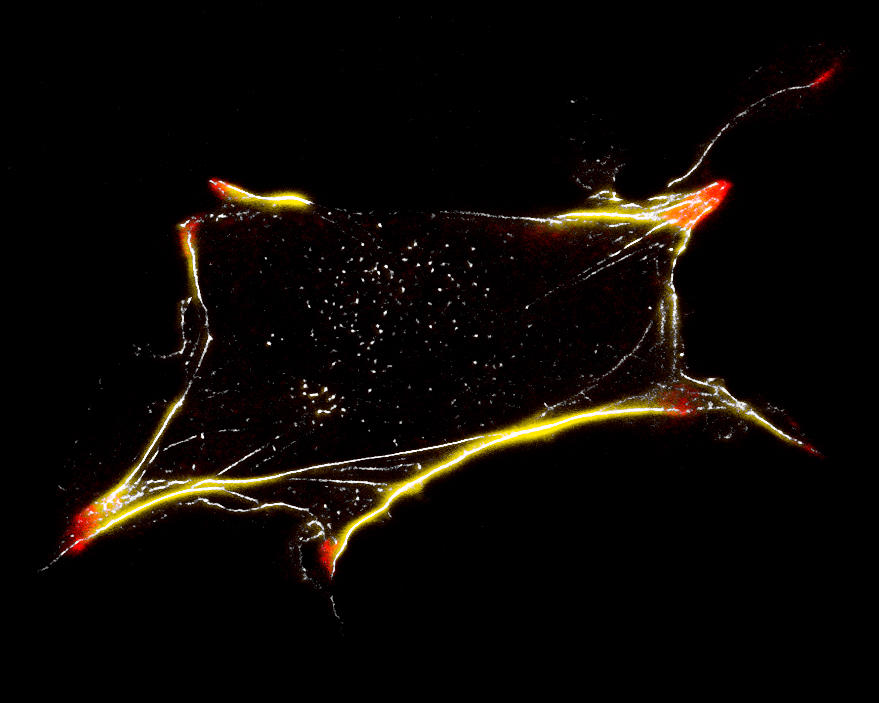TIRFing the Master’s degree to shore
Monica Hellesvik has been one of the pioneers to test the new TIRF microscope at the department. She needed to look closely at cell adhesive properties and the TIRF microscope was the perfect tool for it since it is particularly well suited for studying structures closest to the glass slides.
Main content
Recently, a microscope with an application called TIRF (Total Internal Reflection Fluorescence), was added to the MIC instrument park at the Department of Biomedicine. This type of microscopy is particularly well suited for imaging structures close to the bottom of the cell dish.
This feature came in handy for Master student Monica Hellesvik, who together with supervisor Henriette Aksnes in the Arnesen lab, needed to find answers regarding cell adhesive properties.
Monica’s project build on previous work in the Arnesen lab. Here, Henriette and colleagues found that cells lacking a specific enzyme, NAA80, had increased motility as well as changes in the cytoskeletal organization corresponding to increased cell migration. NAA80 is a posttranslational modifier of actin. In our cells, multiple actin proteins join together in threads forming a dynamic cytoskeleton that is a key player in several cellular processes, including cell locomotion. Since cells modified to lack NAA80 show increased motility, one can imagine that the NAA80 protein may act as a cellular brake. This function in keeping migration in check, may be relevant to cancer biology, in particular metastasis. Now they wanted to investigate how NAA80-lacking cells interact with their surroundings in order to explore NAA80 as a potential metastasis marker and this project was perfect for Monica, a cancer research-passionate Master’s student.
One of Monica’s interesting findings, thanks to her microscopic “TIRFing”, was that after seeding cells in cell culture dishes, the cells lacking NAA80 were much faster to adhere and spread out. With TIRF imaging Monica could show that adhesion structures were much more matured in the NAA80-lacking cells. She therefore described the cells as “Fast & Furious” in her scientific poster at the NBS winter meeting 2019, where Monica’s TIRF work was recognized with a poster award. In addition to TIRF, Monica used a live-cell holographic imager to explore cell invasiveness in Matrigel, which mimics the extracellular matrix that surrounds the cells in our body.
Monica presented her thesis and graduated with MSc in Molecular Biology at The Department of Biological sciences December 6th 2019 and plan to continue her cancer research.

